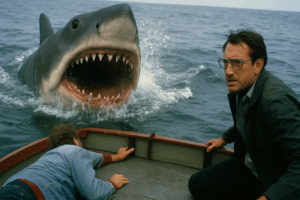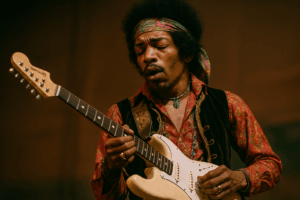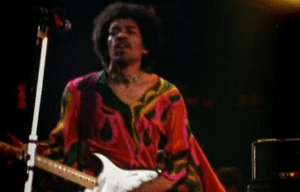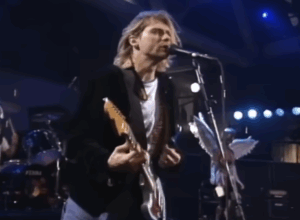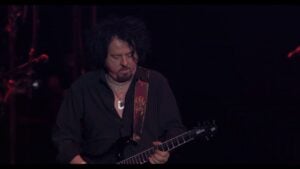The Greatest Rock Bass Performances Of All Time

via @daveryder / X
The bass guitar often sits in the background, acting as the glue between the rhythm and melody. But sometimes, a bassist steps up and delivers a performance that redefines what the instrument can do. From technical prowess to groove, speed, and sheer innovation, the following performances stand as some of the greatest in rock history.
Each of these bass performances showcases a different aspect of what makes the instrument so essential to rock music. From the technical wizardry of John Myung and Geddy Lee to the raw power of John Entwistle and Cliff Burton, these players redefined what it means to be a bassist.
What unites all these performances is their ability to push the boundaries of bass playing. Whether through sheer speed, intricate melodies, or groove-heavy rhythms, these bassists elevated their respective songs to legendary status.
1. “YYZ” – Geddy Lee (Rush)
Rush’s instrumental masterpiece “YYZ” is a showcase of Geddy Lee’s unparalleled bass playing. The song, released on Moving Pictures (1981), features an intricate 10/8 time signature, inspired by the Morse code for Toronto’s airport, which gives it a unique rhythmic feel. Lee’s bass work on this track is a mix of precision and groove, providing both the foundation and melody of the song.
What makes “YYZ” extraordinary is how the bass is treated as a lead instrument. Lee’s dexterity and sense of timing shine as he plays rapid-fire licks that weave seamlessly with Neil Peart’s drums and Alex Lifeson’s guitar. The interplay between the trio is so tight that it feels like one continuous musical conversation.
Lee’s use of harmonics, fast runs, and his signature fingerstyle technique elevate this song into legendary status. Even decades later, “YYZ” remains a gold standard for rock bassists, proving that bass isn’t just for keeping rhythm—it’s for taking the spotlight.
2. “The Real Me” – John Entwistle (The Who)
John Entwistle, often regarded as one of the most technically gifted rock bassists, turned “The Real Me” from Quadrophenia (1973) into a masterclass of bass-driven energy. Instead of merely providing low-end support, Entwistle played the bass like a lead instrument, filling the gaps left by Pete Townshend’s power chords with a fluid, almost drumming-like approach.
His playing on “The Real Me” is relentless, as if he’s dueling with Keith Moon’s chaotic drumming. The bassline drives the song forward with rapid-fire fills, aggressive picking, and counter-melodies that push the boundaries of what a rock bassist should do. His technical skill is apparent in how he makes incredibly complex runs sound effortless.
Unlike many rock songs of its era, where bass was often buried in the mix, “The Real Me” puts Entwistle’s playing front and center. The track serves as proof that The Who’s sound was as much about the bass as it was about Townshend’s guitar theatrics and Roger Daltrey’s commanding vocals.
3. “The Lemon Song” – John Paul Jones (Led Zeppelin)
Few basslines ooze as much groove and swagger as John Paul Jones’ work on “The Lemon Song” from Led Zeppelin II (1969). Drawing heavily from blues influences, particularly Howlin’ Wolf’s “Killing Floor”, Jones delivers a free-flowing, improvisational performance that feels as juicy as the song’s title suggests.
Throughout the track, Jones seamlessly switches between deep, bluesy grooves and rapid, nimble runs up and down the neck of his Fender Jazz Bass. His ability to lock in with John Bonham’s drumming while still keeping a sense of fluidity is a testament to his musicianship.
The bassline in “The Lemon Song” is a perfect example of how groove can elevate a song. Jones doesn’t just follow the chords—he plays around them, embellishing the rhythm with fills and slides that make the song feel alive. It’s a masterclass in both blues and rock bass playing.
4. “Anesthesia (Pulling Teeth)” – Cliff Burton (Metallica)
Cliff Burton’s “Anesthesia (Pulling Teeth)” from Kill ‘Em All (1983) is a rare moment in metal history where the bass takes the lead in a way that leaves listeners in awe. The track is essentially a bass solo, and it cemented Burton’s status as one of the most influential metal bassists of all time.
Using heavy distortion and wah effects, Burton approached the bass like a lead guitarist. His use of fingerpicking techniques and classical influences made his playing stand out in a genre that often relegates bass to a supporting role. His ability to build tension and release throughout the solo shows his deep understanding of dynamics and melody.
Burton’s tragic death in 1986 cut his career short, but his impact on metal bass playing remains immense. “Anesthesia (Pulling Teeth)” is a bold statement that bass can be just as expressive and powerful as any other instrument in rock and metal.
5. “Tommy the Cat” – Les Claypool (Primus)
Les Claypool is in a league of his own, and “Tommy the Cat” from Sailing the Seas of Cheese (1991) is one of his most mind-blowing performances. The song’s signature slap bass technique is executed with such precision that it almost sounds inhuman.
Claypool’s percussive approach to the instrument makes the bass feel like a drum, a guitar, and a lead instrument all at once. His ability to mix funk and rock with his slap-and-pop technique results in a groove that is both infectious and technically astonishing.
Beyond the technical fireworks, “Tommy the Cat” showcases Claypool’s unique sense of rhythm and storytelling. His ability to fuse humor, groove, and complexity into a single song is why he remains one of the most revered bassists in rock history.
6. “Apostrophe” – Jack Bruce (Frank Zappa)
Jack Bruce’s bass tone on “Apostrophe” (1974), a collaboration with Frank Zappa, is as thick and gritty as they come. With his signature fuzzed-out bass tone, Bruce delivers a raw and aggressive performance that perfectly complements Zappa’s unpredictable guitar work. The way Bruce attacks each note with precision and authority makes this song one of his most distinctive performances.
The interplay between Bruce and drummer Jim Gordon creates a groove-heavy foundation that lets Zappa go wild on guitar. Bruce’s lines are anything but passive—he actively drives the song forward with his aggressive attack and fluid runs. His playing feels like an extension of the song’s experimental nature, adding layers of complexity to an already intricate track.
What makes “Apostrophe” ( so special is how Bruce’s bass is both melodic and percussive at the same time. His ability to mix groove with complex phrasing is part of why he is considered one of the all-time greats. His fuzzed-out tone and aggressive attack make this track one of the most memorable moments in rock bass history.
7. “Sound Chaser” – Chris Squire (Yes)
Chris Squire’s playing on “Sound Chaser” from Relayer (1974) is a prog-rock tour de force. Known for his Rickenbacker tone and intricate lines, Squire crafts a bassline that feels like a journey through time and space. The song features a mix of blistering speed, complex rhythmic shifts, and melodic counterpoint that is as thrilling as it is unpredictable.
The song’s complex time signatures and shifting dynamics demand a bassist with both technical skill and creativity. Squire’s playing is fast, articulate, and full of counter-melodies that add to the song’s complexity. He moves effortlessly between syncopated grooves and rapid, cascading runs, keeping the song dynamic and engaging.
His ability to make the bass both the backbone and the lead of the song is unmatched. Few bassists could write a 10-minute piece that remains captivating throughout, but Squire makes it feel effortless. His performance on “Sound Chaser” solidifies his status as one of progressive rock’s greatest bassists.
8. “Metropolis Pt. I” – John Myung (Dream Theater)
John Myung’s performance on “Metropolis Pt. I” from Images and Words (1992) is a benchmark for progressive metal bass playing. His rapid-fire fingerstyle technique and perfect synchronization with the band’s intricate compositions make this track an absolute standout.
The song’s basslines are both melodic and rhythmic, providing an essential foundation for the song’s time changes and technical wizardry. Myung’s ability to blend complexity with groove is what makes him one of prog metal’s most respected bassists. He navigates through odd time signatures, rapid arpeggios, and seamless transitions with incredible precision.
His work on this track is so challenging that very few bassists can play it note-for-note. It remains a high-water mark for technical bass playing in rock and metal. Myung’s relentless technique and fluidity throughout the song prove why he is one of the most disciplined and awe-inspiring bassists in modern progressive rock.
9. “Thela Hun Ginjeet” – Tony Levin (King Crimson)
Tony Levin is a master of both traditional bass playing and experimental techniques, and “Thela Hun Ginjeet” from Discipline (1981) is a prime example of his unique style. Using his signature Chapman Stick, Levin crafts a rhythmic and percussive bassline that gives the song its unmistakable groove.
What makes Levin’s playing so remarkable is how he turns the bass into both a melodic and rhythmic instrument simultaneously. His tapping technique allows him to play counter-rhythms and harmonies that add depth to the song’s intricate structure. The interplay between Levin’s bass and Adrian Belew’s guitar creates a hypnotic, interlocking pattern that defines the sound of “Thela Hun Ginjeet”.
Levin’s performance on this track proves why he is one of the most respected bassists in progressive rock. His ability to blend technical mastery with musicality elevates “Thela Hun Ginjeet” into one of King Crimson’s most rhythmically compelling pieces.
10. “My Generation” – John Entwistle (The Who)
John Entwistle’s bass solo in My Generation from The Who’s self-titled debut album (1965) was revolutionary. Before this track, bass solos were nearly unheard of in rock music, and Entwistle’s aggressive, lead-style playing turned heads.
Rather than simply providing a steady rhythm, Entwistle delivers rapid, ascending bass runs that cut through the mix with an intensity that was years ahead of its time. His use of treble-heavy tone and a pick helped redefine what the bass could do in rock music. The song’s energy is driven just as much by Entwistle’s playing as by Pete Townshend’s windmill guitar strumming and Keith Moon’s explosive drumming.
This song remains one of the most influential bass performances in rock history. It inspired countless bassists to see the instrument as more than just a supporting player, proving that the bass could be just as exciting and expressive as the lead guitar.














